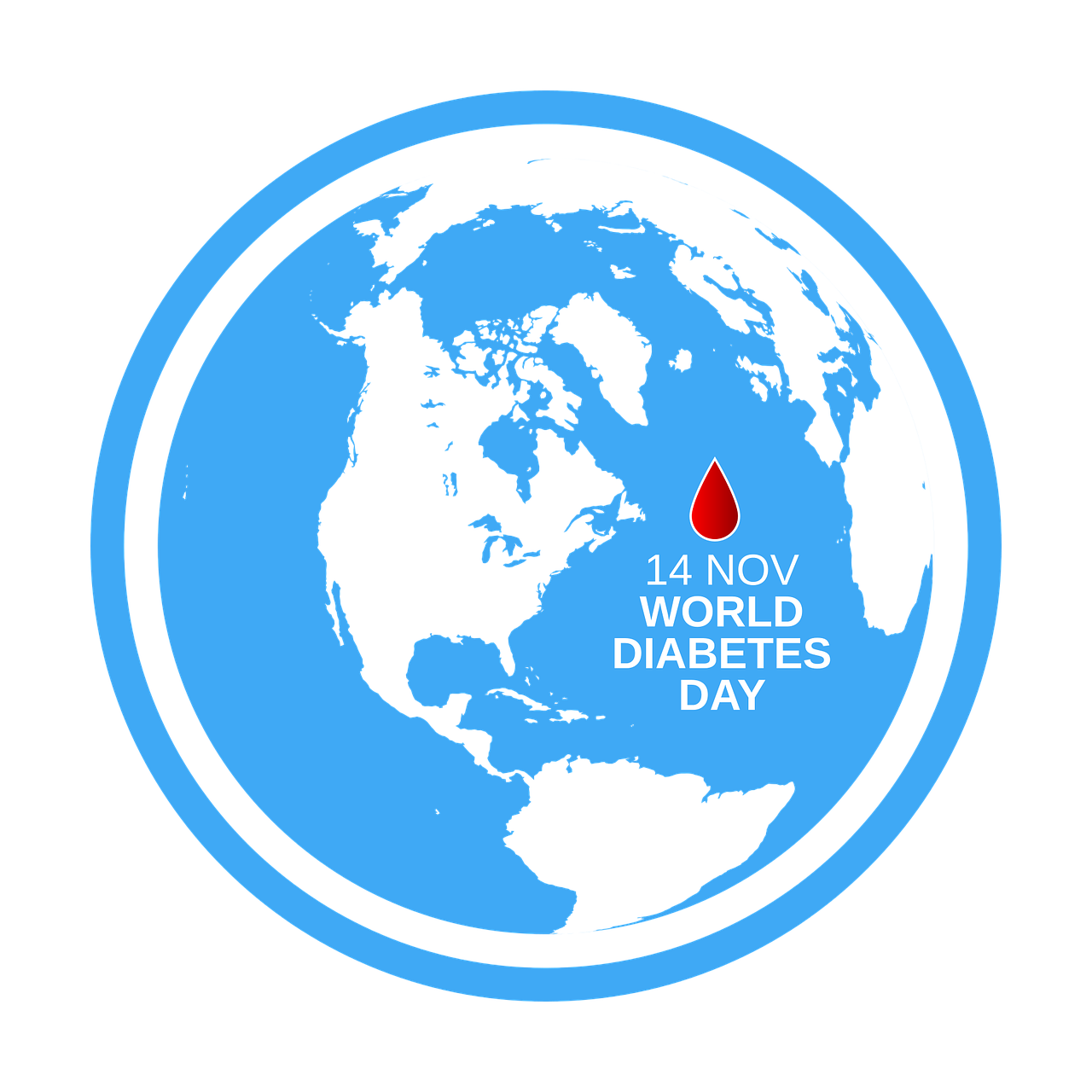Today is World Diabetes Day 2022, a day to raise awareness about the condition and its impact on people around the world. diabetes is a serious condition that can lead to a number of health complications, including heart disease, stroke, kidney failure, and blindness. According to the World Health Organization, diabetes caused 1.6 million deaths in 2019.
Types of Diabetes
There are two main types of diabetes: type 1 and type 2. Type 1 diabetes is an autoimmune disease in which the body does not produce insulin, while type 2 diabetes is a result of lifestyle factors such as obesity and lack of exercise. There are many ways to prevent or manage diabetes, including eating a healthy diet, maintaining a healthy weight, and exercising regularly.
If you have diabetes, it’s important to monitor your blood sugar levels and see your doctor regularly. World Diabetes Day is an opportunity to raise awareness about this condition and its impact on people’s lives. By increasing understanding of diabetes, we can help to prevent it and improve the lives of those affected by it.
What is world diabetes day?

World Diabetes Day is an annual event that aims to increase awareness of diabetes and its complications, as well as to promote strategies for its prevention and management. The day also provides an opportunity to reflect on the challenges faced by people living with diabetes and their families.
The theme of World Diabetes Day 2020 is “The Family and Diabetes”. The family plays a critical role in the management of diabetes, and strong family support can make all the difference in helping people to live healthy lives with the condition.
The different types of diabetes
More than 422 million adults live with diabetes, and 1.6 million new cases are diagnosed each year. The most common type of diabetes is Type 2, which affects 90% of people with the disease. Other types include Type 1, gestational diabetes, and prediabetes.
Type 2 diabetes is the most common form of the disease, accounting for 90% of all cases. It typically develops in adulthood and is often associated with obesity. In Type 2 diabetes, the body does not produce enough insulin or is unable to use insulin properly. This can lead to a build-up of sugar in the blood, which can damage organs and cause other health problems.
Type 1 diabetes is less common, accounting for around 10% of all cases. It usually develops in childhood or adolescence and is not linked to obesity. In Type 1 diabetes, the body does not produce any insulin at all. This means that sugar cannot be metabolized properly, leading to a build-up in the blood.
Gestational diabetes occurs during pregnancy and usually goes away after the baby is born. However, women who have had gestational diabetes are at increased risk of developing Type 2 diabetes later in life.
Prediabetes is a condition in which blood sugar levels are higher than normal but not high enough to be classified as diabetic. If left untreated, prediabetes can lead to Type 2 diabetes.
The global prevalence of diabetes
The global prevalence of diabetes has been rising steadily over the past few decades. In 1980, an estimated 4.7 million adults were living with diabetes worldwide. By 2014, this number had more than tripled to 16.9 million. The vast majority of people with diabetes live in low- and middle-income countries, where the disease is most prevalent among working-age adults.
There are several factors behind the rising global prevalence of diabetes. One is population growth: as the world’s population has increased, so has the number of people with diabetes. Another is aging: as people live longer, they are more likely to develop diabetes. The obesity epidemic is also a major contributor to the increase in diabetes cases worldwide.
As the global prevalence of diabetes continues to rise, so does the burden of the disease on individuals, families, and health systems. Diabetes is a leading cause of death and disability worldwide, and its complications can be costly and debilitating. In order to prevent further increases in diabetes cases and related harms, it is essential that we take action to address the underlying causes of the disease.
The symptoms of diabetes
There are three main symptoms of diabetes:
1. Increased thirst and urination: If you have diabetes, you may find yourself feeling thirsty all the time, even if you’re drinking fluids regularly. This is because your body isn’t able to process the sugar in your blood properly, so it tries to get rid of it through increased urination.
2. Fatigue: Diabetes can cause fatigue for a few reasons. First, when your body can’t process sugar properly, it doesn’t have the energy it needs to function properly. Second, high blood sugar levels can damage the small blood vessels that supply oxygen and nutrients to your cells, causing them to work harder and leading to fatigue.
3. Weight loss: Despite increased appetite and calorie intake, people with diabetes may still experience weight loss because their bodies are unable to use the sugar in their blood for energy purposes. When this happens, the body starts breaking down stored fat for energy instead, leading to weight loss.
Diabetes treatments
There are many different treatments for diabetes, and the type of treatment that is best for you may vary depending on the type of diabetes you have, your lifestyle, and your overall health.
If you have Type 1 diabetes, you will need to take insulin every day to keep your blood sugar levels under control. You may also need to make changes to your diet and exercise routine.
If you have Type 2 diabetes, you may be able to manage your condition with lifestyle changes alone. However, some people with Type 2 diabetes will also need medication to help control their blood sugar levels.
No matter what type of diabetes you have, it is important to work closely with your healthcare team to create a treatment plan that is right for you.
How to prevent diabetes
There are a number of things you can do to prevent diabetes, or at least delay its onset.
First and foremost, you should maintain a healthy weight. A body mass index (BMI) of 25 or less is ideal, but even a BMI between 25 and 30 puts you at increased risk for diabetes. To calculate your BMI, divide your weight in kilograms by your height in meters squared.
You should also exercise regularly. Aim for at least 30 minutes of moderate-intensity activity on most days of the week. Walking, running, swimming, and biking are all great options. Not only will exercise help you maintain a healthy weight, it will also improve your insulin sensitivity.
In addition to exercising and maintaining a healthy weight, you should also eat a healthy diet. Focus on nutrient-dense foods like fruits, vegetables, whole grains, and lean protein. Avoid processed foods and sugary drinks as much as possible. And make sure to get plenty of fiber; studies have shown that people who consume more fiber have a lower risk of diabetes.
Finally, don’t smoke tobacco products and limit your alcohol intake. Both smoking and drinking increase your risk of developing diabetes.
If you do develop diabetes, there are treatments available that can help you manage the condition and live a long, healthy life. But it’s always better to prevent the disease in the first place if you can. So make lifestyle changes now that will reduce your risk.
World Diabetes Day 2022 events
In 2022, World Diabetes Day will be celebrated on November 14. The day is an international event that raises awareness of diabetes and its impact on people’s lives. The theme for World Diabetes Day 2022 is “The Family and Diabetes”.
Events around the world will be held to mark World Diabetes Day and to promote awareness of the condition. In the United States, events will be held in cities across the country, including New York City, Los Angeles, Chicago, and Houston. There will also be events in other countries, such as Canada, the United Kingdom, Australia, and New Zealand.
These events will include a range of activities, such as walks and runs, educational sessions, and opportunities to get screened for diabetes. There will also be celebrations of community initiatives that are making a difference in the fight against diabetes.
Conclusion
World Diabetes Day is a global awareness day that has been celebrated annually on November 14th since 1991. The objective of World Diabetes Day is to increase awareness about diabetes and its prevention, as well as to promote the rights of people with diabetes. This year’s theme for World Diabetes Day is “Family and Diabetes”, which aims to highlighting the role of families in supporting people with diabetes. If you are living with diabetes, or know someone who is, make sure to mark November 14th on your calendar and join us in celebrating World Diabetes Day 2022!
- Quantum Breakthrough: Room-Temperature Superconductivity Achieved
- India’s Cricket Fervor Hits Fever Pitch as World Cup Final Nears
- India Takes on Australia in the 2023 ICC Men’s Cricket World Cup Final
- Pharma Jobs: AIIMS Raipur Announces Direct Recruitment for 31 Pharmacist and Dispensing Attendant Positions; Applications Open till July 31, 2023
- Got Utkarsh Small Finance Bank IPO? Find Out NOW! Simple Steps to Check Your Allotment Status!
- Voltas and Zee Entertainment Lead as Volume Toppers in Stock Market; See High Trading Activity








